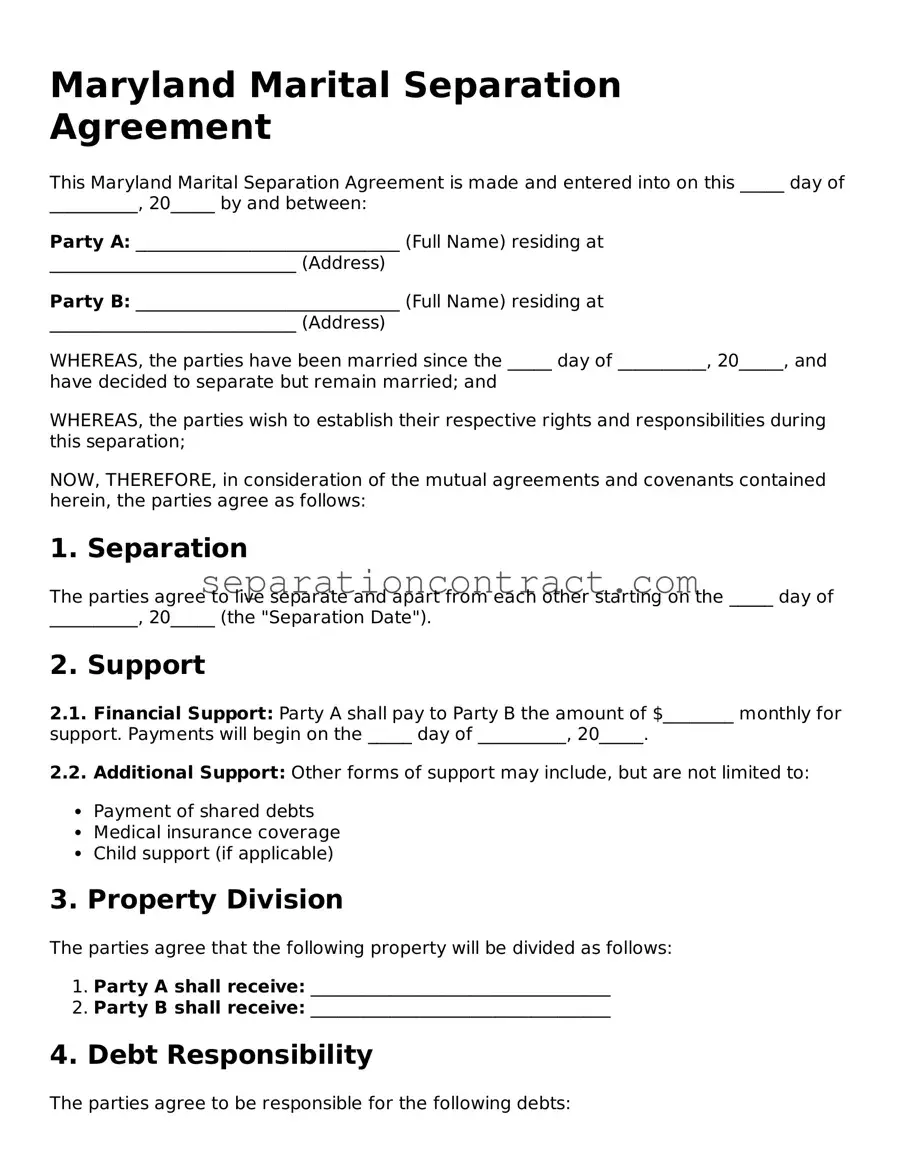Valid Marital Separation Agreement Form for the State of Maryland
A Maryland Marital Separation Agreement is a legal document that outlines the terms of a couple's separation, addressing issues such as property division, child custody, and support obligations. This agreement helps both parties clarify their rights and responsibilities during the separation process. To ensure a smooth transition, consider filling out the form by clicking the button below.
Fill Out Your Form Online
